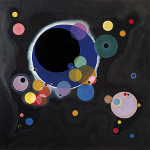Statistical power is key for robust, replicable science. Sample size greatly impacts statistical power, and previous studies have been undermined by too small sample sizes.
Here, we characterized statistical power as a function of number of subjects and trials to detect brain sources with varying properties at sensor level. We used resting-state MEG datasets of the Human Connectome Project (HCP) to simulate "experiments". The data was divided in two conditions with varying number of subjects and trials, and a dipolar source was injected at a known anatomical location in one condition, but not the other, detecting significant differences with classical paired t-tests across subjects.
Group-level detectability varies drastically with the origin of the simulated effect. We found, in line with previous single-subject studies, that the most detectable sources occur at locations that are closest to the sensors and oriented tangentially with respect to the sensor array. Cross-subject variability in orientation also affected cross-subject detectability, boosting detection where variability was particularly small, or hindering it in regions where variability was large. A considerable but difficult to predict covariation of location and orientation of the sources, and their cross-subject variability, makes it difficult to evaluate the impact of each of these variables individually in realistic anatomical models. Therefore, in a final set of simulations, we controlled spatial properties independently of individual anatomy, to disentangle effects of each spatial property. Distance and orientation relative to sensors separately heavily impacted detectability. In terms of cross-subject variability, only orientation affected detectability.
No ideal number of trials and subjects for any experiment can realistically be provided for MEG, but awareness of the impact of spatial source properties on detectability should be promoted. For network studie, methods correcting for spatial discrepancies in detectability may be required to account for variations in statistical power across the brain, or at least experiments should be designed to adequately sample the the least detectable source in the studied network, and guarantee the expected statistical power for the whole network.

 PDF version
PDF version
